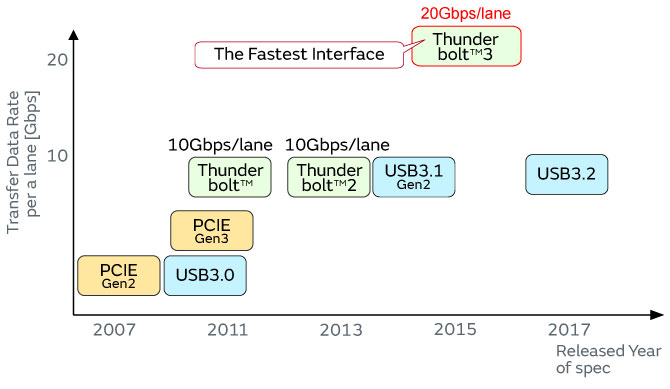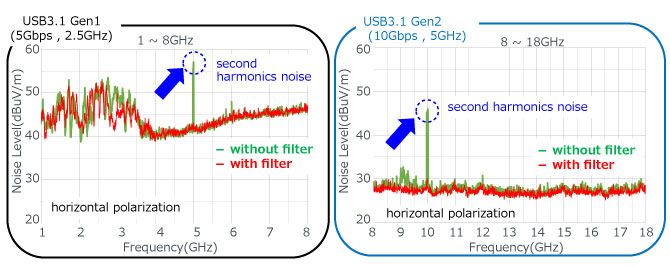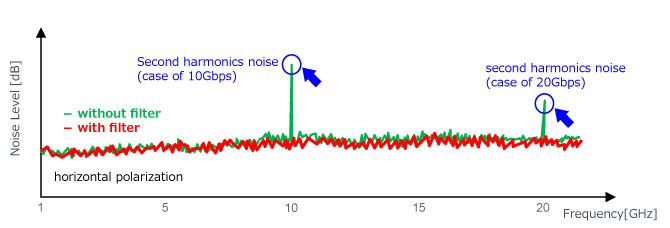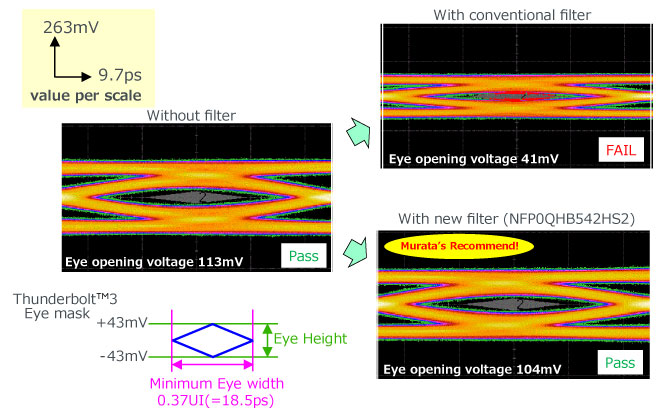NFG0QHB542HS2

Noise suppression technologies/case study introduction (Consumer)
INDEX

It is difficult to obtain materials for evaluation of Thunderbolt™3 noise, so the noise situation and noise suppression methods were estimated based on the data for USB3.1 Gen2, which is an interface that uses technology similar to Thunderbolt™3.
Comparison of technical requirements for Thunderbolt™3 and USB 3.1 Gen2
| Thunderbolt™3 | (evaluation case) USB3.1 Gen2 |
|
|---|---|---|
| Transfer Data Rate | 20Gbps x1lane ※Max:40Gbps(20Gbps x2lane) |
10Gbps x1lane |
| Number of Data lanes | Data 2lane | Data 1lane |
| Connector, Cable | Connector: USB Type-C Cable: dedicated cable |
Connecter: USB Type-C Cable: dedicated cable |
| Receiver EQ | Must | Must |
| Characteristic Impedance of transmission line |
90ohm plus minus 5% | Cable: 90ohm plus or minus 5ohm Connector: 90ohm plus or minus10ohm (transmission line no Regulation) |
| Third party certification exam | required | Voluntary restraint |
Communication was performed using a USB3.1 compatible SSD connected to a host PC, and the radiation noise was measured.
(Measurement was performed in both the Gen1 and Gen2 operating modes.)
The noise level when a NFG0QHB542HS2 common mode choke noise filter is inserted to the USB Tx line as noise suppression was also checked.

USB3.1 Gen1 communication: Narrow band noise (second-order harmonics) was observed at 5 GHz, which is twice the signal fundamental frequency of 2.5 GHz.
USB3.1 Gen2 communication: Narrow band noise (second-order harmonics) was observed at 10 GHz, which is twice the signal fundamental frequency of 5 GHz.
The main component of this noise is thought to be the common mode, so large suppression effects for the noise observed at 5 GHz and 10 GHz were obtained by inserting a NFG0QHB542HS2 common mode noise filter to the Tx line.
It is expected that second-order harmonics of the communication signal frequency will be observed as narrow band common mode noise in Thunderbolt™3 communication, in the same manner as USB3.1.
Thunderbolt™3 supports data transfer rates of 10 Gbps/lane and 20 Gbps/lane, so it is speculated that 10 GHz and 20 GHz common mode noise will occur with Thunderbolt™3.

Like USB3.1, a common mode noise filter is effective.

We examined the effect of noise filters on Thunderbolt™3 signals.
When a conventional noise filter was used, the eye pattern of the signal collapsed and did not satisfy the standard.
When the newly developed NFG0QHB542HS2 common mode choke coil was used, the eye pattern was maintained at a level that satisfied the standard.
This showed that when using noise filters with Thunderbolt™3, conventional filters should not be used, and instead products that support higher frequency signals should be selected.
NFG0QHB542HS2 : Look here for product details.
Related link: “Noise suppression for USB3.1” that supports high data transfer rates